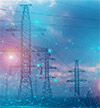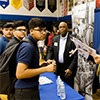Front Line: Implications for Industry of Raising the Minimum Wage
With manufacturers today employing fewer minimum wage-workers, the industrial sector may be only minimally affected by an increase.
Q2 2019

The campaign for a $15 per hour minimum wage has been gaining momentum across the U.S. Workers in as many as 22 states and the District of Columbia may receive higher minimum wages this year, according to a National Employment Law Project (NELP) report. About 17 million workers will benefit from the 2019 wage increases, the nonprofit estimates.
“(Cost-of-living adjustments) are small increases, but at least workers won’t be falling behind inflation in the coming years,” Yannet Lathrop, researcher and policy analyst at NELP, told USA Today. Thirty-eight cities and counties also are scheduled to raise their minimum wages, according to the NELP report. In more expensive states and cities — such as Hawaii — the next anticipated change will be an hourly minimum wage higher than $15.
In making their case, Democrats point out that, adjusted for inflation, the spending power of the lowest paid worker has fallen nearly 40 percent in the past five decades. The federal minimum wage rose to its current level of $7.25 in 2009. Rep. Bobby Scott (D-VA), chairman of the House Committee on Education and the Workforce, has sponsored legislation to gradually increase the minimum wage to $15 per hour, a bill supported by House Speaker Nancy Pelosi.
Rather than waiting for federal action, several Democrat-led states have acted to raise their hourly minimum wage to $15, and others are preparing to act, according to Politico.com. New York, California, Illinois, Massachusetts and, most recently, New Jersey have each enacted a $15 minimum wage. Maryland, Connecticut, Vermont, and Hawaii are reported to be close to following suit. A number of other states will raise their minimum wages “at least somewhat” this year, Politico reported. And several large cities, including San Francisco and Seattle, have also boosted base pay to $15 per hour.
How Will Higher Minimum Wages Impact U.S. Manufacturers?
Because manufacturing has been transformed by automation and other technology advances, minimum wage workers represent a much smaller percentage of the manufacturing workforce than they used to — less than 1 percent earn less than the minimum wage, according to Alivia Metts, an economist and director of consulting for Emsi. Overall, manufacturing requires a much higher skill level than it used to.
New York, California, Illinois, Massachusetts and, most recently, New Jersey have each enacted a $15 minimum wage. Factory mechanics, for example, “used to be grit laborers,” Metts told Area Development. Now they have to run and maintain the programmable logic controllers that run whole factories. “If a PLC goes down and a manufacturer doesn’t have somebody to fix it, they are losing millions a day,” Metts explained.
However, competition for skilled labor has also been a factor in increasing wages, Metts noted. “The cost per hour worked — total compensation — has increased pretty dramatically over the last 10 years.”
Kelsey Carvell, a senior manager with Deloitte Consulting LLP’s Digital Supply Networks, cited one beneficial, long-term effect of a uniform minimum wage across the U.S. Carvell explained that tariffs and minimum wage information are two factors manufacturers with large networks — both overseas and stateside — use to build their long-term planning models. Differences in minimum wage requirements create “place congestion” for manufacturers and distribution networks. Locales where the minimum wages are relatively low tend to draw companies for that reason, noted Carvell, citing the state of Georgia as one example.
When manufacturers cluster, that can also create more competition for workers, which can also raise costs. Congestion also heightens the need for roads and other infrastructure and wear and tear on that infrastructure. A secondary impact of this congestion is the current labor shortage of truck drivers. According to Carvell, “A lot of this is due to large manufacturers having similar points of supply and demand.”
A uniform minimum wage “could be an advantage for a lot of companies because they wouldn’t have as much labor force competition in some places, and they would be making network decisions that could be more sustainable, long-term,” Carvell said. “A more even playing field could alleviate some of the competition and help drive costs down in the long run.”
Project Announcements
SencorpWhite Plans Hamilton, Ohio, Headquarters-Manufacturing Operations
12/29/2025
Kraken Technologies Limited Plans New York City Headquarters Operations
12/29/2025
Lupin Expands Coral Springs, Florida, Operations
12/29/2025
KPPC Advanced Chemicals Expands Casa Grande, Arizona, Operations
12/29/2025
Volvo Group Plans Tacoma, Washington, Distribution Operations
12/29/2025
Alnylam Pharmaceuticals Expands Norton, Massachusetts, Operations
12/29/2025
Most Read
-
The Workforce Bottleneck in America’s Manufacturing Revival
Q4 2025
-
Rethinking Local Governments Through Consolidation and Choice
Q3 2025
-
Data Centers in 2025: When Power Became the Gatekeeper
Q4 2025
-
Lead with Facts, Land the Deal
Q3 2025
-
Tariff Shockwaves Hit the Industrial Sector
Q4 2025
-
Investors Seek Shelter in Food-Focused Real Estate
Q3 2025
-
America’s Aerospace Reboot
Q3 2025


